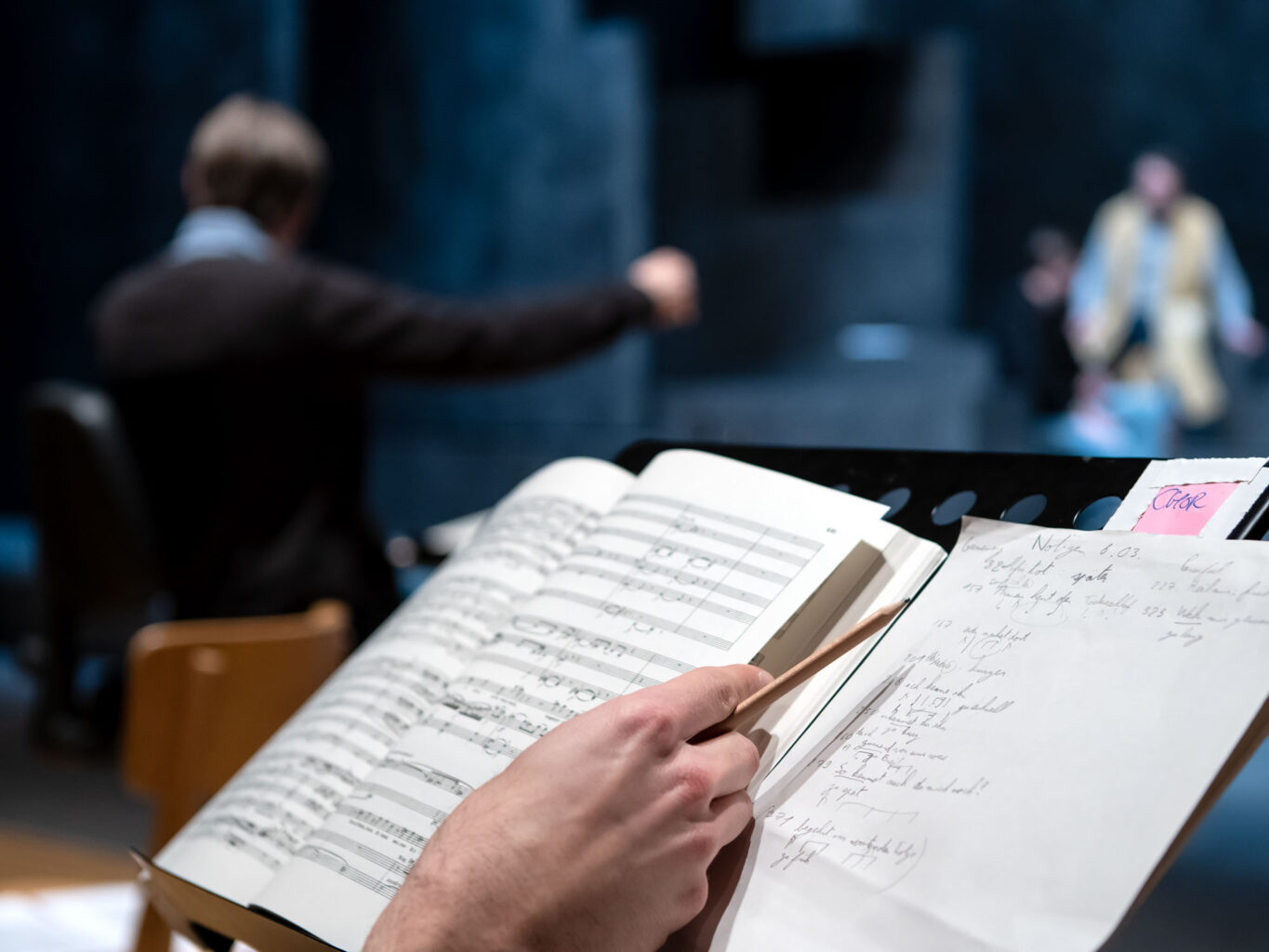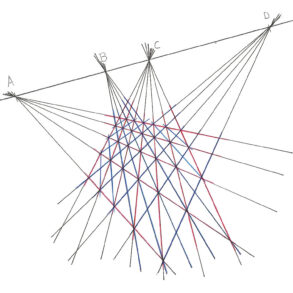It may be of particular interest to take a closer look at the relationship between the founder of Anthroposophy and Richard Wagner, since Rudolf Steiner also called Anthroposophy «the science of the Grail».1 Steiner’s relationship with Wagner’s music was highly critical, starting even during his student days. He sought ‹pure music›, in which sensory impression and spiritual content are identical — in other words, music that has its own purely musical ‹content›. «That the musical should ‹express› anything beyond the creation of tones, as was claimed in all sorts of ways by Wagner’s followers at the time, seemed to me quite ‹unmusical›», Steiner wrote in his autobiography.
«I referred to Wagnerian barbarism as the grave of all true musical understanding.» He also lamented his fate «that I came into surroundings in which people were almost exclusively Wagner admirers. All of this contributed a great deal to the fact that – much – later it became quite irksome for me to wrestle my way through to an understanding of Wagner, which is, after all, the humanly natural thing to do in the face of such an important cultural phenomenon.»2
This process evidently began in Weimar, where Steiner moved at the age of 29. That is where he recalled: «I think back with pleasure to the performances of Wagner’s music dramas that I attended in Weimar.»3 When he then went to Berlin in 1897, he gradually developed a different approach to Wagner, one that was no longer oriented towards ‹pure music›, but towards what he recognised as Wagner’s deepest and real concern. First of all, however, he once again dwelled on the relationship between music and language, which Wagner understands in a very specific sense. In 1898, Steiner wrote in an essay: «[Richard Wagner] believed that what cannot be expressed in words about this life must seek the language of music […].4 But I also still believe that he underestimated the expressive capacity of the word. Basically, the word intimates more than it clearly expresses. And if we adhere to this deeper sense of the word, which can be reached through such intimation, then it can – in my opinion – point to the most hidden depths of the soul’s life. We must not reproach words for not being taken in deeply enough by most people.»5 This very clearly calls into question Wagner’s artistic conception and working method. As a creator of language and music in equal parts, he assigned music the task of continuing where linguistic expression had come to its end. Steiner thought that Wagner «underestimates the expressive capacity of the word» and that it does not correspond to the nature of the word to experience a continuation or even an intensification in the «language of music».6

When Steiner subsequently expressed his high regard for Wagner’s work,7 he did so from a different perspective. His assessment of the relationship between language and music in Wagner’s work, as formulated in 1898, was not affected by this and was maintained, but he did not address it again at this time. From about 1905 onwards, his discussion of Wagner took on a different character: his focus was essentially on Wagner’s basic concerns in his cultural works.8
The New Christianity
Christianity in our time is in a decisive phase of its development. It is based on the tradition of the Bible, the ‹Book› (Latin Biblia). This bond with the book is unconditional. What is not biblical is deemed to be not Christian. ‹Biblical› today, however, means not only the word content of the New Testament but also the exact understanding as stated by the councils in the first centuries as ‹dogmatic definitions›. This leads to a result that was experienced by the Church Father Augustine (354–430) and put by Rudolf Steiner as follows: «It is not in themselves, therefore, that the Gospels have a distinguishing mark for their truth.»9 For Augustine it follows10 what Rudolf Steiner goes on to characterise thus: «They are to be believed because they are based on the person of Jesus; and because from this person the Church mysteriously derives the power to make them appear as truth.»

That time has passed today. The truth of the Gospels must be sought and understood today in other ways than those still described by Augustine. The way to understand the four Gospels is itself in turn a ‹Gospel›, which Rudolf Steiner called the «Fifth Gospel»: «It is through this spiritual Gospel that the other four can be understood.»11 Rudolf Steiner spoke about this objectively present new reality of Christianity from 1910 onwards, in ever-new approaches to the essence. He called the fact of this new reality the «Second Coming of Christ» and substantiated the realm of reality of this event as the «etheric» world. This is the world of supersensory life and creative forces which are to a certain extent ‹adjacent› to the world of the senses, initially in the realm of organic life. The Second Coming of Christ is a supersensory event, but an event that occurs in time like sensory events. There are mainly three areas in which the new will make itself felt.
The first refers to the surroundings. As ‹Cosmic Christianity›, it will regain a spiritual dimension that it still had in early Christianity: the relationship with nature and the course of the year. We might also speak of a lost ‹pagan› dimension. This also points to the relationship with the mysteries of antiquity. This is also how the title Rudolf Steiner gave his first publication on Christianity should be understood: ‹Christianity as a Mystical Fact and the Mysteries of Antiquity›.

The second area in which a new Christianity will show itself today is in the relationship with the workings of evil, as well as with the nature of evil itself. A completely new understanding is to be attained of its meaning and its contribution to the development of the human being. The nine-metre-high wooden sculpture ‹The Representative of Humanity› created by Rudolf Steiner for the Goetheanum can be seen as fundamental and as providing orientation for a new relationship with evil – Christ between the adversary powers Lucifer and Ahriman.
Faith Becomes Sight
The third thing will be a new way of accessing the true nature of Christianity. The previous foundation of belief in the content of faith specified by the Church will increasingly have to be supplemented and replaced by a faith in inner experiences in which Christian reality is seen in a completely new way. When Rudolf Steiner staged his first ‹Mystery Drama› in August 1910, he had a seeress appear in it who speaks quite openly of this new experiential dimension of Christianity (as words spoken by Christ): «You have lived in faith, you were comforted in hope, now be comforted in sight, now be quickened by me. I lived in the souls who sought me within themselves, through my messengers’ word, through their powers of devotion. You have seen the senses’ light and had to believe in the spirit’s creative realm. But now you have gained a droplet of the noble gift of sight.»

We said that Steiner’s view of Wagner changed from about 1905 onwards and was directed towards the basic concern of his cultural production, towards what lay behind his artistic work. Steiner saw this basic concern in Wagner’s search for a future Christianity that prepares the future in the sense and with the spiritual possibilities of our present, the ‹fifth cultural epoch›. One of Wagner’s statements that have been preserved is: «For me, Christianity has not yet entered into life, and like the first Christians, I expect Christ to return.»12 Might there also have been something prescient living in Wagner of the three areas mentioned above relating to the new Christianity under the sign of the Second Coming?
For the first area (Cosmic Christianity, pagan dimension of Christianity, Christianity and the mysteries), the beginnings of this can be clearly seen. Steiner identifies them: «Thus the event of Bayreuth shows us the confluence of two cultural currents, the revival of the mysteries of Greece and a new Christianity.»13

Wagner’s Good Friday Spell
Perhaps Wagner was indeed reaching for these mysteries of Greece in connection with Christianity when he wrote in 1849: «Thus Jesus would have shown us that we humans are all equal and brothers; Apollo, however, would have put the seal of strength and beauty on this great fraternal union, he would have led the human being from the doubt of his value to the consciousness of his supreme divine power. Let us then build the altar of the future, in life as in living art, to the two most sublime teachers of humanity: Jesus, who suffered for humanity, and Apollo, who raised it to its joyful dignity!»14 This altar of the future thus joins Christianity with paganism – a future perspective of the next cultural epoch (spring sun in the sign of Aquarius). Rudolf Steiner says in this regard: «The sun will then enter the constellation of Aquarius. That is when Christianity will really come into its own, when paganism will be joined with Christianity.»15
In Wagner’s work, the clearest expression of this connection between paganism and Christianity, between nature and human morality, is found in an experience he had at the age of 44 on Good Friday in Zürich, when he moved into the small country house (‹Refuge at the Green Hill›) provided to him by friends, where he was finally able to live and work undisturbed. «Now beautiful spring weather also broke in; on Good Friday I woke up for the first time in this house in full sunshine: the garden was green, the birds were singing, and at last I was able to sit down on the parapet of the little house to enjoy the long-awaited, promising silence. Fulfilled by this, I suddenly said to myself that today was indeed ‹Good Friday›, and remembered how meaningfully this reminder had struck me once before in Wolfram’s ‹Parzival›. Since that stay in Marienbad […] I had never again occupied myself with that poem; now the ideas it contained came to me in overwhelming form, and, starting with the Good Friday thought, I quickly conceived an entire drama which, divided into three acts, I immediately sketched out in a few quick strokes.»16 The seed of Wagner’s poetic work ‹Parsifal› as a whole is to be found in this experience. The artistic elaboration in particular then appears in the third act in the scene of the ‹Good Friday Spell›.17

The second area of a new Christianity of the future, the relationship with the nature and workings of evil, also plays a decisive role in Wagner and in particular in ‹Parsifal› and becomes especially clear in the polarity of the Grail Castle and Klingsor’s realm. It runs through everything, up to and including a single figure such as Kundry, and ultimately leads to the ‹enhancement› of everything in the sense of Goethe’s saying: «The essence of the world exhausts itself in polarity and enhancement.»18
The third area in which the new Christianity is experienced is the new way of accessing its essence and reality. It is about the relationship between faith and seeing. Rudolf Steiner sees Wagner’s work as being directly related also to this area: «Richard Wagner saw the time approaching when Christianity must be fulfilled, […] when this Christianity will speak its very own language. Now those who have believed shall also become seeing again.»19 Five years later, the words spoken by the seeress in the Mystery Drama about the return of Christ sound very similar: «You have lived in faith, you were comforted in hope, now be comforted in sight.» But the relationship with sight is even more intimate in Wagner’s work. The ‹Second Coming of Christ› takes place in the realm of the etheric world, those forces which are connected with life and growth. We have already seen: in this area, Wagner himself became a seer in his Good Friday experience, which became for him the decisive starting point for his ‹Parsifal›: «And, starting with the Good Friday thought, I quickly conceived an entire drama which, divided into three acts, I immediately sketched out in a few quick strokes.» Thus Wagner’s pivotal Good Friday experience embraces the new Christianity from the first to the third area.
According to the description of Rudolf Steiner, who had attended a performance of ‹Parsifal› in Bayreuth, this ‹Good Friday thought› of seeing, from which the drama was conceived, has also become a quality of the music: «Wagner’s music contains everything that is true in ‹Parsifal›. The listeners receive very special oscillations in their etheric bodies through Wagner’s singular music. Therein lies the secret of Wagner’s music. You don’t really need to understand things at all, but you get their beneficial effects through the etheric body. The etheric body is connected with all the surges of the blood. Richard Wagner understood the secret of purified blood. In his melodies lie the oscillations that must be in the etheric body of the human being if they are to purify themselves as is necessary to receive the secret of the Holy Grail.»20 These are very far-reaching aspects of Wagner’s (‹Parsifal›) music. It directly stimulates the etheric part of the human being and makes them see: «You don’t really need to understand things at all, but you get their beneficial effects through the etheric body.» Steiner no longer addressed the relationship between music and language here – he had a completely new point of view on Wagner’s music.
Steiner made his remarks before the year 1909. They relate to a Christianity that shines in from the future – just as Wagner also felt. This changed a few years later: the future becomes the present and is characterised by Rudolf Steiner as the «Second Coming of Christ», which is a reality of our present. Wagner was already looking to this future, he was ‹expecting› the Second Coming of Christ. And it is from this background of the soul that ‹Parsifal› was born as a ‹sacred festival drama›.
Translation Christian von Arnim
Images Impressions from the rehearsals for Parsifal at the Goetheanum. Photos: François Croissant
Footnotes
- Rudolf Steiner, ‹Occult Science›. An Outline. CW 13.
- Rudolf Steiner, ‹Autobiography. Chapters in the Course of My Life›, 1861–1907. CW 28, Chap. 4.
- Ibid., Chap. 19.
- In ‹Opera and Drama› (Part Two, VI): «A motif, however, only intensifies itself through the convergence of the various moments of understanding it contains into a decisive moment of feeling, the convincing communication of which the word the poet can only achieve through […] the language of sound.»
- Rudolf Steiner, ‹Gesammelte Aufsätze zur Dramaturgie 1889–1900›. CW 29, article ‹Theaterskandal›, 1898.
- In Rudolf Steiner’s description of the arts and their order in relation to each other, poetry is superior to music. Music: «We submerge ourselves with the I in the astral body: this gives rise to music.» Poetry: «When the human being absorbs the [spirit-self] as coming from something higher and immerses it in their I, that is to say, submerges themselves again […] in the I with the intimations of their spirit-self, then poetry comes into being.» CW 275, 29 December 1914.
- «Richard Wagner approached the archetypal mystery like few others. It is precisely the power with which he did this that makes him a great artist. He must not be taken merely as an ordinary musician but he has to be seen as someone of deep insight who wanted to re-embody for modern humanity the profound mysteries of the Holy Grail.» Rudolf Steiner, ‹The Christian Mystery›. GA 97, 29 July 1906.
- For an account of Rudolf Steiner’s relationship with Richard Wagner’s music see Michael Kurtz, ‹Rudolf Steiner und die Musik – Biographisches – Geisteswissenschaftliche Forschung – Zukunftsimpulse›. Chapter 3: ‹Richard Wagner, einer der größten Künstler der neueren Zeit›.
- Rudolf Steiner, ‹Das Christentum als mystische Tatsache›. GA 8, 1989, p.108.
- Augustinus, ‹Contra Epistolam Manichaei quam vocant Fundamenti›, 6.
- Rudolf Steiner, ‹Das Ereignis der Christus-Erscheinung in der ätherischen Welt›. GA 118, 18 April 1910.
- Cosima’s diary entry of 15 July 1879.
- Rudolf Steiner, The Occult Truths of Myths and Legends. CW 92, 19 May 1905.
- At the end of the text ‹Die Kunst und die Revolution› of 1849.
- Ibid., 3 December 1905.
- Richard Wagner, Mein Leben. Part 3, 1850–1861.
- Ilona Schubert reports that she was at ‹Parsifal› with Rudolf Steiner and that he told her that in the Good Friday Spell the music to the words of Gurnemanz: «Nature now absolved from sin, obtains its day of innocence today» was directly inspired by the Grail being.
- In a letter of 24 May 1828 to Chancellor von Müller.
- Rudolf Steiner, The Occult Truths … 19 May 1905.
- Rudolf Steiner, Das christliche Mysterium. 29 July 1906.









